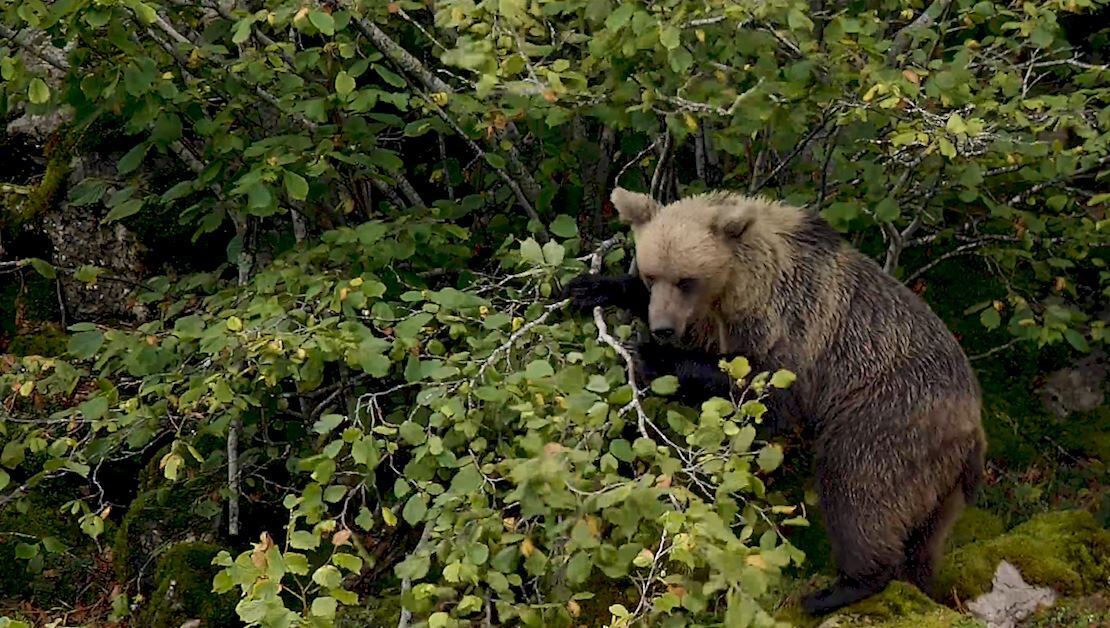Call to Earth is a CNN editorial series committed to reporting the environmental challenges facing our planet and showcasing solutions to those challenges. initiative A permanent planet Rolex partnered with CNN to raise awareness and education about key sustainability issues and encourage positive action.
(CNN Spanish) — The Cantabrian mountain range in northern Spain has seen an extraordinary history of wildlife rescue. Here lives a species that is still considered endangered, but has experienced exponential growth in the past three decades: the brown bear.
“We saw that the bear was dying. It was on the verge of extinction. We were clear that something had to be done, but something appropriate,” Guillermo Palomero, president of the Oso Pardo Foundation, told CNN en Español. .
According to the Brown Bear Foundation, indiscriminate poaching is one of the reasons the species nearly went extinct in the past. The organization started its work in 1992 when the bear was in critical condition. “There were two separate embryos, one of which had the lowest genetic variation in the world of brown bears, and between the two Cantabrian embryos there weren’t 60, 70 bears,” he recalls.
Brown bears in Cantabria have made an extraordinary recovery. (Courtesy of Brown Bear Foundation)
Numerical (and genetic) recovery
The tireless work of the foundation, the efforts of regional governments and the respect of residents of “bear zones”, as they affectionately call these places, have led to a significant increase in the number of bears. According to the most recent genetic survey carried out in 2020 by the Autonomous Communities, about 370 brown bears now live in the region.
That’s the result of working not just with the bear specifically, but with the territory and the community. “Even though we call ourselves Brown Bear, our desire is to work for the bear, but for its territory, for its habitat, and for all the cultural ties to bears’ territories,” Palomero says.
In the Cantabrian mountain range, bear populations have recovered from a demographic and genetic perspective.
“Currently, the two previously separated populations are now connected through males, and genetic diversity has increased,” explains Juan Carlos Blanco, a researcher at the foundation.
How to Avoid Bear-Human Encounters
An increase in the number of bears increases the number of encounters between these animals and humans.
One of the foundation’s goals is to develop strategies to avoid these encounters and provide behavioral advice for the rare occasions when they do occur.
“We focus on how we can reduce certain economic activities such as bears that enter cities, bears that eat garbage, for example, ecotourism, because of the impact they can have or have on the brown bear’s own security”, says José Vicente López, dedicated to the investigation of large carnivores at the Higher Council for Scientific Research. .
The Brown Bear Foundation anticipates the effects of climate change on bears.
Coexistence with the bear has become a priority for the inhabitants of these mountains, and every year the number of tourists who come to the region increases with pride, always seeing a bear from a distance. Animal and take all necessary precautions.
“We see that tourism is growing and the possibility of observing bears is encouraging more people to come and do this activity,” says Sofía González, an ecotourism entrepreneur at Somido Experience.
Anticipating the effects of climate change
Brown Bear Foundation’s other priority challenge is working on projects to mitigate the effects of climate change on animal behavior. Hibernation, based mainly on fruits and berries, is affected by fire and even their food.
The spectacular Cantabrian mountain range is home to brown bears in Spain.
Climate change is going to punish some species: blueberries, peaches, Atlantic oaks, but it seems to favor others, Mediterranean oaks, chestnuts. Well, we’re going to work to promote these species and plant as many of these species as we can that are not negatively affected by climate change. And, in addition, we are going to plant them far away from people. You have to keep the bears out of the population,” Palomero explains.
The success of this conservation strategy is mirrored in the Pyrenees, where the brown bear population is still low but is slowly recovering.
“We must strive for a peaceful and peaceful coexistence between humans and bears.”



:quality(85)/cloudfront-us-east-1.images.arcpublishing.com/infobae/DYRQWUXU2VHMHNIVOD22JCU2KU.jpg)
:quality(85)/cloudfront-us-east-1.images.arcpublishing.com/infobae/HVMMKV4KMVDNVJD5W5F7GK4AHY.jpg)
